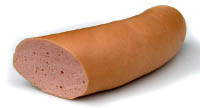When we think of German food, we usually think of sauerkraut, sausages and pretzels. But German cooking is actually quite expansive and varied. There are considerable regional variations with each region specializing in its own recipes and cooking techniques. To help you on your German culinary adventure, here is a short guide to food and drink in the country.
Every region has its Wurst
Probably the best-known German food is wurst or sausages.There are more than 1,500 varieties of wurst, ranging from Brühwurst (scalded sausage), Rohwurst (raw sausage), and Kochwurst (cooked sausage). One of the most popular types of sausage is Bratwurst from the region of Nürnberg, made with spiced and seasoned pork filling. Other favorites include Weisswurst (white sausage made from veal and pork and seasoned with parsley, onions, bacon and lemon powder), Leberwurst (liver sausage), Rinderwurst (beef sausage) and Blutwurst (blood sausage). The Germans usually eat wurst along with a bun and some mustard.
Other regional specialties
Bavaria
Bavarian cuisine carries Austrian culinary influences. Some popular dishes include Knödel (dumplings), schnitzel, Gansebraten (roast goose), Kalbshaxe (veal shank) and pretzels. Franconia, in Bavaria, is best known for Lebkuchen, a type of biscuit similar to gingerbread.
Baden Wurttemberg
Baden in the German state of Baden Wurttemberg is known for some of the best German dishes such as Badische Zwiebelsuppe (a creamy onion soup), Badische Schäufele (cured and smoked pork shoulder), Schneckensuppe (snail soup) and Schwarzwalder Kirschtorte (Black Forest cherry cake). There’s also the famous cherry brandy called Kirschwasser.
Rhineland
Rhineland is known for its Sauerbraten, a German pot roast made with an assortment of meats such as beef, lamb, port and mutton. Traditionally, Sauerbraten, which is considered to be among the country’s national dishes, was made with horsemeat.
Westphalian
The region of Westphalian is rich in meats, grains and vegetables. It is especially renowned for its ham, which is dry cured and smoked, to be eaten thinly sliced without any further cooking.
Hesse
Hessian specialties include Grune sosse (a green sauce made with mixed herbs), Handkäs' mit Musik (sour milk cheese topped with chopped onions), Bethmännchen (a traditional Christmas cookie made with marzipan and almonds) and Kartoffelbloatz (known as the Hessian Pizza, made with bread dough and topped with bacon, onion and potato).
Saxony
In Saxony, in central Germany, the specialty is Dresdner Stollen, a Christmas fruit loaf made with dried fruit and coated in powdered sugar. The region is also famous for its Leipziger Allerlei, a vegetable dish made with asparagus, peas, carrots and morels in a rich sauce.
Lower Saxony
Lower Saxony in northern Germany has a lot of seafood in its cuisine as it lies close to the North and Baltic seas. Some of the region’s favorite foods include Rollmopse (pickled herring fillets rolled around savory filling) and Aalsuppe (eel soup).
Schleswig Holstein
This region is known for its rich, hearty meals. Hams, stews and seafood feature in many dishes. Dairy is also a mainstay in the cuisine and the region plays an important role in Germany’s dairy industry. Schleswig Holstein is especially known for its marzipan and beers, many of which are exported to several parts of the world.
Berlin
Berlin has a highly modern restaurant scene. But when you’re in the capital city, don’t forget to try some of its local delicacies like Kohlsuppe (cabbage soup), Erbensuppe (pea soup), Regensburger wurst (a type of boiled sausage with a spicy pork filling), Hase im topf (baked rabbit pâté) and most notably, Eisbein (pig’s knuckles). Berlin also has some favorite desserts like Käsekuchen (cheesecake) and Kugelhupf (marble cake or Bundt cake).
German beverages
Germany has a rich beer-making tradition and its beers are famous across the world. Some of the main categories or styles of German beer include Helles bier (light-colored lager), weizenbier (wheat beer), bier vom fass (draught beer), dunkles bier (brown ale) and pils or pilsener (a specific type of light-gold lager beer, and among the most popular of German beers).
The country is also known for its wines, especially Liebfraumilch and Riesling. In addition, there are about six thousand other types of wines produced in the country.
Other national beverages include Apfelschnapps (schnapps distilled with apples), Kirschschnapps (schnapps distilled with cherries) and Korn (distilled from corn, and the German equivalent of vodka).

